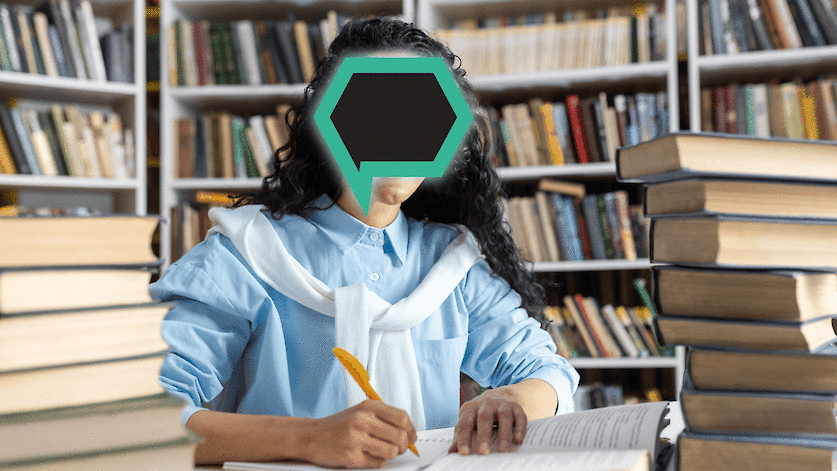Chatbots work by using artificial intelligence (AI) and natural language processing (NLP) technologies to understand and interpret human language. When a user interacts with a chatbot, it analyzes the input and tries to understand its intent. It does this by comparing the user's request to a set of predefined keywords and phrases that it has been programmed to recognize. Based on these keywords and phrases, the chatbotwill generate a response that it thinks is most appropriate. If you want to know more, have a look on our what is a chatbot page.
As the technology becomes more widespread in its use by businesses, it’s natural that we want to understand what makes these automated communication tools tick. We’ll take a closer look at the different types of chatbots out there, how they work and why applying AI to these automated communication tools is a game-changer for their application in customer service and internal support.
What Are the Main Types of Chatbots?
Before we can answer that question, it’s important to understand that not all chatbots are created equal. There are two main types of chatbots that you commonly come across when interacting with the technology online: rule-based and AI-powered.
Rule-based chatbots
By far the simplest and most common type are rule-based chatbots. These are specifically programmed to respond to keywords and commands. This makes them relatively simple to create but limits their ability to manage anything but the simplest interactions or assist users with complex requests.
A typical example of a rule-based chatbot would be an informational chatbot on a company's website. This chatbot would be programmed with a set of rules that match common customer inquiries to pre-written responses. For example, if a customer says "What are your opening hours?" the chatbot might have a pre-programmed rule that matches the keyword "open" and responds with a message providing information on when the business is open.
Often referred to as “click-bots”, rule-based chatbots rely on buttons and prompts to carry conversations and can result in longer user journeys.
AI-powered chatbots
For more advanced interactions, artificial intelligence (AI) is being baked into chatbots to increase their ability to better understand and interpret user intent. Artificial intelligence chatbots use natural language processing (NLP) to provide more human-like responses and to make conversations feel more engaging and natural. AI chatbots also employ machine learning (ML) allowing them to learn from their interactions with users and enabling them to build on their knowledge base over time and to create better, more personalized experiences.
Using a sub-branch of artificial intelligence called conversational AI, these smarter chatbots are able to assist users in a variety of creative and helpful ways. For example, a user could say “I’m interested in watching a movie this evening”, and the chatbot would use its conversational AI to understand the user’s intent and provide relevant suggestions based on location, preferences and the user’s previous movie-watching choices.
Chatbot Terms You Should Know:
- Artificial Intelligence (AI) - A form of computing designed to simulate human intelligence. AI systems solve problems and perform tasks by recognizing patterns in data and making decisions based on those patterns.
- Machine Learning (ML) - A process in which a computer learns from experience rather than programming. This is achieved by gathering data and identifying insights on its own, without the aid of a human.
- Natural Language Processing (NLP) - A branch of artificial intelligence that enables machines to understand, interpret and generate human language. NLP combines machine learning algorithms and computational linguistics to process and interpret language.
How Do Chatbots Work - A step-by-step guide
Now that we understand the differences between the types of chatbots that are available, we can answer the question of how do chatbots work in practice?
The typical interaction flow of a chatbot works as follows:
- A user starts a conversation by typing in a message or speaking to a chatbot through a user interface.
- The chatbot uses NLP to analyze the words and phrases in the message to understand the user’s intent.
- The chatbot searches its database of pre-programmed responses for a relevant answer.
- The response is then sent back to the user via the user interface.
- The user can then choose to respond further and the process repeats until the conversation ends.
How Does AI Make Chatbots Smarter?
NLP is the key part of how an AI-powered chatbot understands and actions on user requests, allowing for it to engage in dynamic, and ultimately helpful, interactions.
NLP itself is made up of two sub-processes that allow it to supercharge the understanding capabilities of a chatbot: Natural Language Understanding (NLU) and Natural Language Generation (NLG).
Even More Chatbot Terms You Should Know:
- Natural Language Understanding (NLU) - The process of converting text into structured data so that it can be understood by a machine. NLU is the process in which chatbots can understand and interpret human language.
- Natural Language Generation (NLG) - The process of converting structured data back into text so that it can be understood by humans.
- Intent - Important topics that define what a user wants when interacting with a chatbot.
- Entity - Fields, data or words that are designated as important for a chatbot to complete a request.
A good example of NLP at work would be if a user asks a chatbot, “What time is it in Oslo?”. In order for the chatbot to provide a correct response, NLP first corrects any spelling, identifies synonyms, interprets grammar, recognizes sentiment and breaks down the request into words and sentences that make it easier for a machine to understand.
Next, NLU correctly identifies the topic of the request and extracts other important information that can be used to trigger additional actions.
These are what are known as Intents and Entities. In this example, the intent would be “Time”, and the entity would be “Oslo”.
NLG then generates a response from a pre-programmed database of replies and this is presented back to the user.
There are a number of pre-built chatbot platforms that use NLP to help businesses build advanced interactions for text or voice. These are either made up of off-the-shelf machine learning models or proprietary algorithms.

